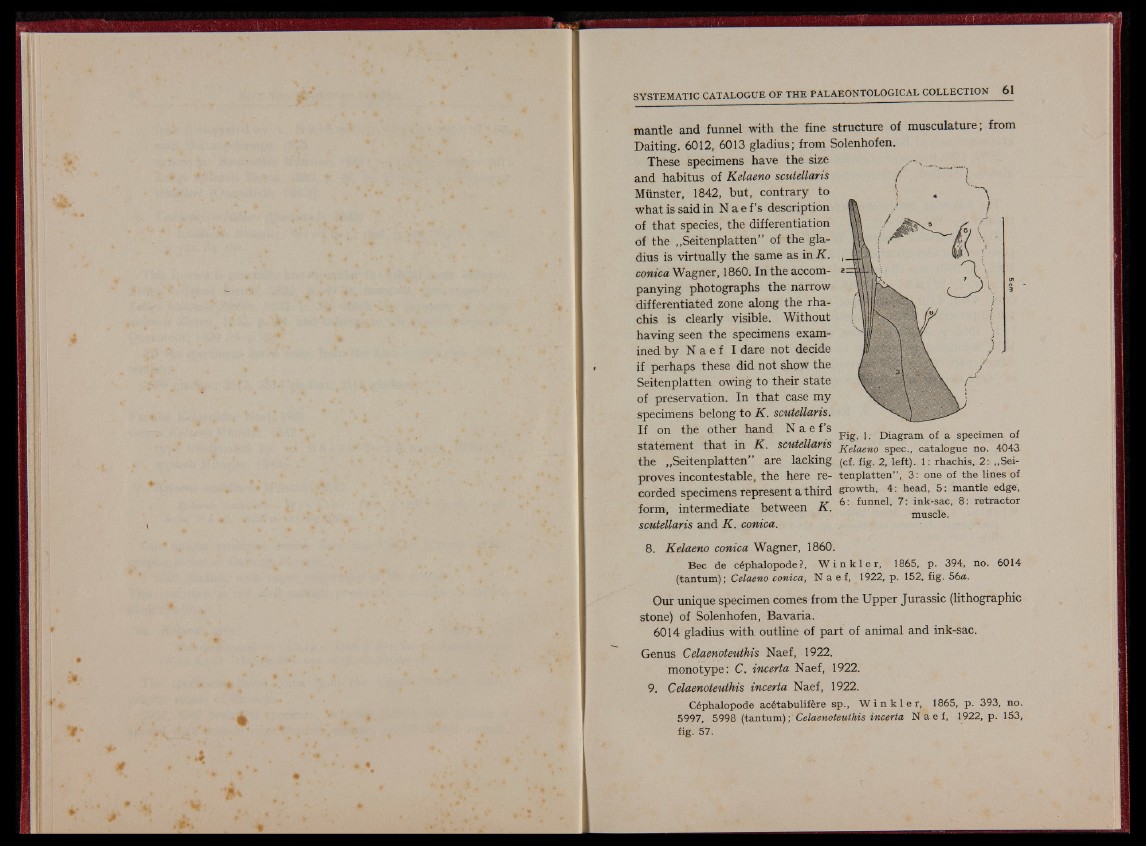
mantle and funnel with the fine structure of musculature; from
Daiting. 6012, 6013 gladius; from Solenhofen.
These specimens have the size jjSk__
and habitus of Kelaeno scutellaris f [
Münster, 1842, but, contrary to
what is said in N a e f’s description
of that species, the differentiation
of the „Seitenplatten” of the gladius
is virtually the same as in K.
conica Wagner, 1860. In the accompanying
photographs the narrow
differentiated zone along the rha-
r.his is clearly visible. Without
having seen the specimens examined
by N a e f I dare not decide
if perhaps these did not show the
Seitenplatten owing to their state
of preservation. In that case my
specimens belong to K. scutellaris.
If on the other hand N a e f’s
statement that in K. scutellaris
the „Seitenplatten
proves incontestable, the here re
Fig. k Diagram of a specimen of
Kelaeno spec., catalogue no. 4043
are lacking (cf. fig. 2, left). 1: rhachis, 2: „Sei-
- ten p la tten ” , 3: one of the lines of
corded specimens represent a third growth, 4: head, 5: mantle edge,
6: funnel, 7: ink-sac, 8: re tra c to r
K.
form, intermediate between muscle.
scutellaris and K. conica.
8. Kelaeno conica Wagner, 1860.
Bec de céphalopode?, W i n k l e r , 1865, p. 394, no. 6014
(tantum); Celaeno conica, N a e f, 1922, p. 152, fig. 56a.
Our unique specimen comes from the Upper Jurassic (lithographic
stone) of Solenhofen, Bavaria.
6014 gladius with outline of part of animal and ink-sac.
Genus Celaenoteuthis Naef, 1922.
monotype: C. incerta Naef, 1922.
9. Celaenoteuthis incerta Naef, 1922.
Céphalopode acétabulifère sp., W i n k l e r , 1865, p. 393, no.
5997, 5998 (tantum); Celaenoteuthis incerta Na e f , 1922, p. 153,
fig. 57.